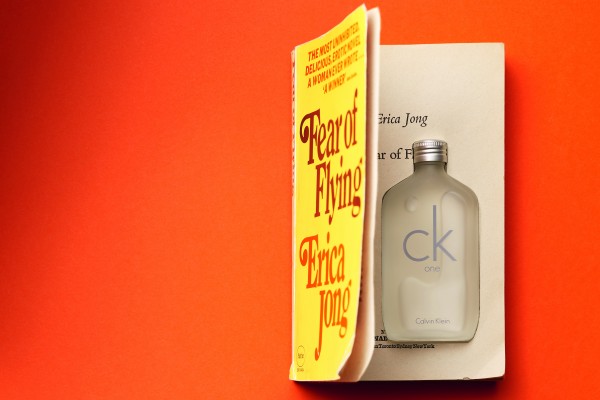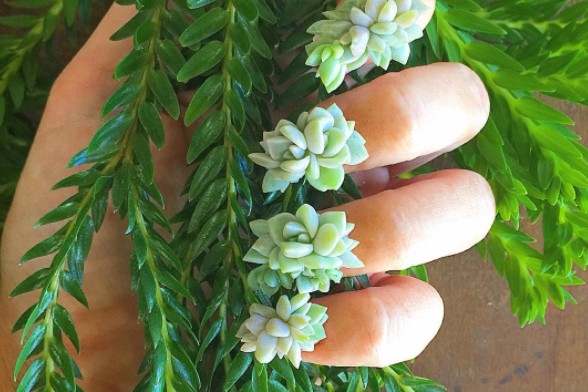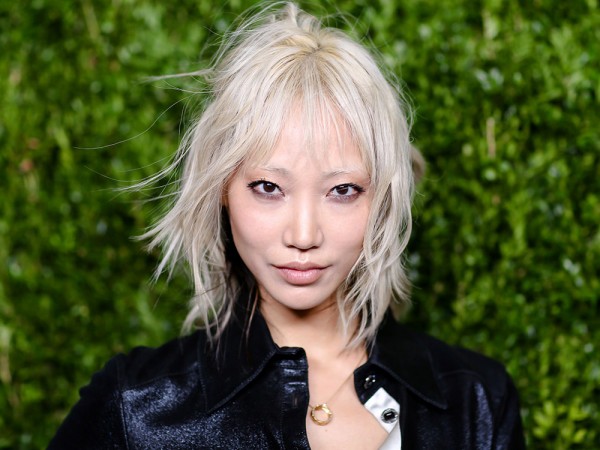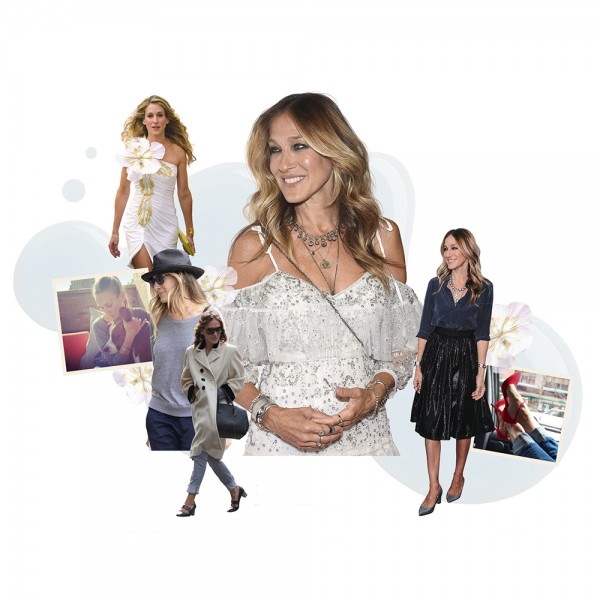InStyle’s deputy editor’s very personal take on how a fragrance can be empowering…
‘If I ever smell Yves Saint Laurent’s Opium, I’m about seven years old, sat in my faded Muppet Show pyjamas, watching The Bionic Woman. My mum is heading out in tight Vanderbilt jeans and strappy heels, exuding wafts of exotic bergamot and myrrh. The scent makes me feel in awe of her exotic adulthood, and hints at an independent female world that I don’t share. It smells complex and mysterious.
Cacharel’s Anais Anais evokes memories of my sister. The porcelain white bottle, decorated with powder-pink lilies, and the scent of jasmine convey her gentleness, while a dash of amber hints at freedom, boys and secrets. It signifies abandoning doll’s houses for whispered conversations on the landline phone and a leather diary with ‘Privit!!’ scrawled on the front.
My wildly eccentric grandmother wore Revlon’s Charlie. I remember the blue box with its jaunty italic script and the notes of white flowers and burnt trees – it felt matriarchal and powerful. Fitting for a woman who went though five husbands and once scared off a burglar by pulling his trousers down. Those three women who shaped my attitudes towards being female will forever be immortalised by those scents. I may forget what they did or said, but I’ll never forget how they smelt. So if I want to connect to my earliest experiences of the power of being female, I’ll find them in a perfume hall.
It wouldn’t even have occurred to my grandmother the emancipated statement she was making with her perfume. But Charlie was in many ways the first feminist fragrance. It was launched in 1973, amid the biggest shake-up in women’s liberation since the right to vote. Bookshelves were lined with Germaine Greer’s The Female Eunuch and Simone de Beauvoir’s The Second Sex. Women were no longer on speaking terms with their bras, there were protests at Miss World pageants and the first female prime minister was on her way into office. These shifts heralded a rejection of beauty rituals. Germaine Greer roared that she was ‘sick of the powder room’. Feminism changed women’s attitudes irrevocably. And the fragrance industry needed to catch up – fast.
Read more: are your hormones controlling your perfume choices?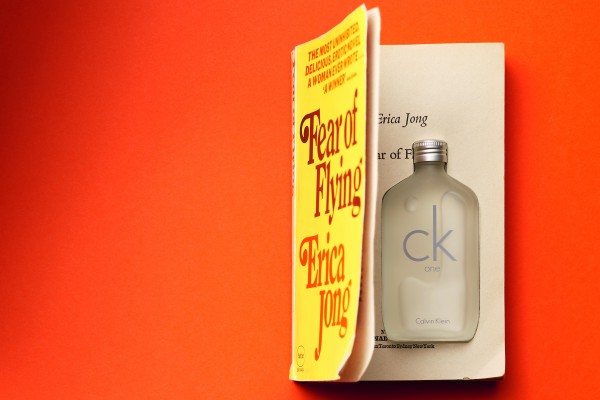
The ad that launched Charlie tore down traditional perceptions of scent. The model entered at the wheel of a Rolls-Royce, wearing a satin jumpsuit and playfully hurling her trilby at the hotel concierges. Unapologetically dominant, she allowed a man to swirl her around before throwing herself down at a table in front of another suitor. ‘Charlie by Revlon,’ intoned the voiceover with amused indulgence, ‘A most original fragrance.’ Fragrance was being aimed directly at the newly liberated woman who arrived at social events on her own and treated men with casual insouciance. It was a smart, calculated move by Revlon, which paid off – Charlie became an international bestseller.
As someone born into this era, fragrance had always meant empowerment, rather than passive floral compliance to me. It complemented your identity – and your right to be noticed. I was captivated by my mother’s eastern-influenced scents such as Opium and fascinated by the expensive tuberose-accented First by Van Cleef & Arpels worn by my godmother. She was a glamorous pop star who made her own millions, which she spent on Bruce Oldfield trouser suits and who during my teenage years, dismissed a bad boyfriend as ‘an asshole – and not even a pretty one’. So I always saw scent as a strong female slogan that lingered in the room, reminding people of your presence after you had left.
Back in 1953, Estée Lauder turned fragrance from an occasional indulgence bought for you by a man into a daily female ritual. Youth Dew was cleverly marketed as a bath oil, allowing it to be applied daily, because, as Lauder observed, ‘A woman could buy a bath oil for herself without feeling guilty or giving hints to her husband.’ It transformed the company’s fortunes and turned her into one of the most successful female entrepreneurs of all time.
Earlier than that, Coco Chanel created a scent that personified the free-spirited flapper – Chanel No5. As Barbara Herman, author of Scent And Subversion says: ‘The scent bridged the gap between high-society women and those who were assumed to be catering to their husbands. With jasmine, rose and ylang-ylang compounded with synthetics and aldehydes, known as the “seasoning”, Chanel helped to create a unique blend that ignored the single-flower recipe favoured by the haute. It was liberation from tradition.’ Ninety-five years later, a bottle of Chanel No5 is still sold every 30 seconds.
Everyone remembers the first perfume they bought – the expectation, the thrill of maturity. Eva Mendes has worn the same fragrance since she was a teenager. ‘I wanted to smell like a woman – so I bought Estée Lauder Knowing.’ You and me both, Eva. I discovered it as a scruffy gap-year student who had wandered off-piste into the glittering perfume hall in a Sydney department store. I responded to the poster first, model Paulina Porizkova in a bow tie, arms folded imposingly, diamond bracelet clamped to her wrist, vast supermodel hair. The fragrance was woody, powdery and warm. It smelt of expensive cars, cream power suits and cocktails in the sun.
I loved the smell, but I wanted the lifestyle. Do we buy a fragrance to be the woman in the poster or because of the scent? Rochelle Bloom, ex-president of The Fragrance Foundation, says that no model can shift a dud. ‘It’s always, bottom line, based on the fragrance. If people don’t like a perfume – I don’t care who you are – it won’t be successful.’ Ultimately, she says, ‘it’s all about the juice.’ But Robert Cialdini, marketing professor and author of Influence: Science And Practice, says we can’t underestimate the power of wanting to be like a beautiful woman. ‘Research has shown that we automatically assign to good-looking individuals such favourable traits as talent, kindness, honesty and intelligence… We make these judgements without being aware that physical attractiveness plays a role in the process.’
More… Sexy perfumes: how a scent can turn you on
Polly Vernon, author of Hot Feminist, says her first fragrance was a big step into womanhood, marketing aside.‘I identify the first time I bought perfume (LouLou, cross-channel ferry en route to my French exchange) with aspiring toward glamour and womanhood. It’s easy to say that was the act of some unenlightened young girl, complying with commercial ideas of what is desirable… But it felt like a pretty bloody fabulous rite of passage, and no one should ever try and take that away from me. Style is one way you make your mark on the world, that you claim space in it. And it’s an important one.’
LouLou and Knowing were quite tame offerings when it came to the 80s. The decade screamed indulgence, with Christian Dior’s Poison and Calvin Klein’s Obsession launched in 1985, which we were told lay ‘somewhere between love and madness’. As Klein himself said, ‘Obsession was about insanity. It was society’s obsession with work and love.’ Traditional feminism got turned on its head, with Madonna teaching Gen X women that owning your sexuality was emancipation and warning us ‘second best is never enough’.
It’s significant that my scent during this decade was the decidedly male aftershave Kouros. Unfamiliar with the concept of aftershave, I would pour it on my décolletage direct from the bottle. I remember two old ladies tutting about my overpowering smell on the bus once. I just smiled and turned up my Walkman – because that was exactly what Madonna would do.
Gradually, women’s scents chilled out: 1994 saw the launch of CK One, a unisex fragrance that was all freshly showered skin and green tea. Women had swapped their Wonderbras for singlets and screw you if her eyeliner was a day old. CK One also marked the rise of the androgynous fragrance. Its Steven Meisel campaign featured the gay model Jenny Shimizu, who wore baggy jeans, and no make-up. Scent was suddenly less about sexuality and more about smelling good.
At the start of the millennium, our obsession with celebrity fragrance reached peak frenzy. Women wanted to smell like J Lo ( J Lo Glow made $100 million in its first year) and Britney. This was hardly emancipation in the Germaine Greer sense, but we were making aspirational choices based on people’s careers, rather than their cute faces. One enduring scent from this period is Sarah Jessica Parker’s Lovely. SJP was ahead of her time – it was based on bespoke personal ingredients. As she said herself, ‘I had been making it myself for years with three things. One was from a drugstore. One was a higher-end men’s scent. And one was an oil from a New York City street vendor… It wasn’t until the professionals deconstructed my blend that I actually learned all the notes in the scent I’d been wearing: bergamot, apple, musk, lavender.’
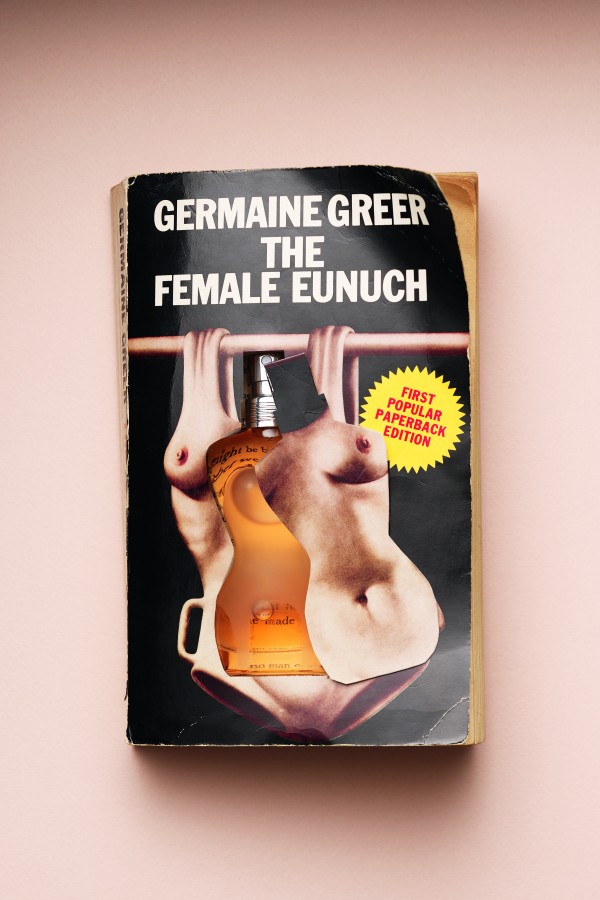
Since then, women’s relationship with fragrance has evolved more than Coco Chanel could have foreseen. For millennials, fragrance is a daily experiment, rather than a lifelong commitment to one brand. Daniel Annese, global brand president of Estée Lauder says, ‘We find on average, the millennial has between five and eight fragrances.’ Today’s women want their fragrance to feel androgynous and bespoke. Like Tom Ford’s collection – is it for men? Women? Who cares. It’s why beauty brands, such as Byredo, or Christopher Brosius’s I Hate Perfume, with their minimalist packaging and backstories, have surged in popularity.
Centennial women ( born after 1995) are all over this. Honey Ross, 19, a new-gen feminist, sees scent as ‘a gift to myself. Lush’s 25:43 became my go-to fragrance when I was about 16, and I found it empowering because the scent smelt different on everyone. It’s not about masking who you are with a loud chaotic fragrance – it’s about enhancing the things that make you authentically you.’
Those Charlie days when feminism was coyly alluded to, rather than explicitly stated, are long gone. Today, feminism sells fragrance. Stella McCartney launched POP this year ‘to show that strong women are a force to be reckoned with’ and Beyoncé’s Rise was inspired by her favourite Maya Angelou poem, Still I Rise. Sample quote: ‘Does my sexiness upset you? Does it come as a surprise. That I dance like I’ve got diamonds. At the meeting of my thighs?’
So what fragrance are you wearing today? I’m having a onesie day and wearing Carven because it’s light and floral, and makes me happy. Tomorrow it might be a room fragrance from Le Bristol hotel in Paris – yep, I wear room spray as perfume. Because I like it.
Continued below…
Whenever I want to feel empowered, a little bit Bey and a lot kick-ass, I remember an Elizabeth Taylor quote my grandmother was fond of: ‘Pour yourself a drink, put on some lipstick, and pull yourself together.’ And give yourself a little spray with whatever you want to smell of. As long as you love it.
Which fragrance empowers you?

